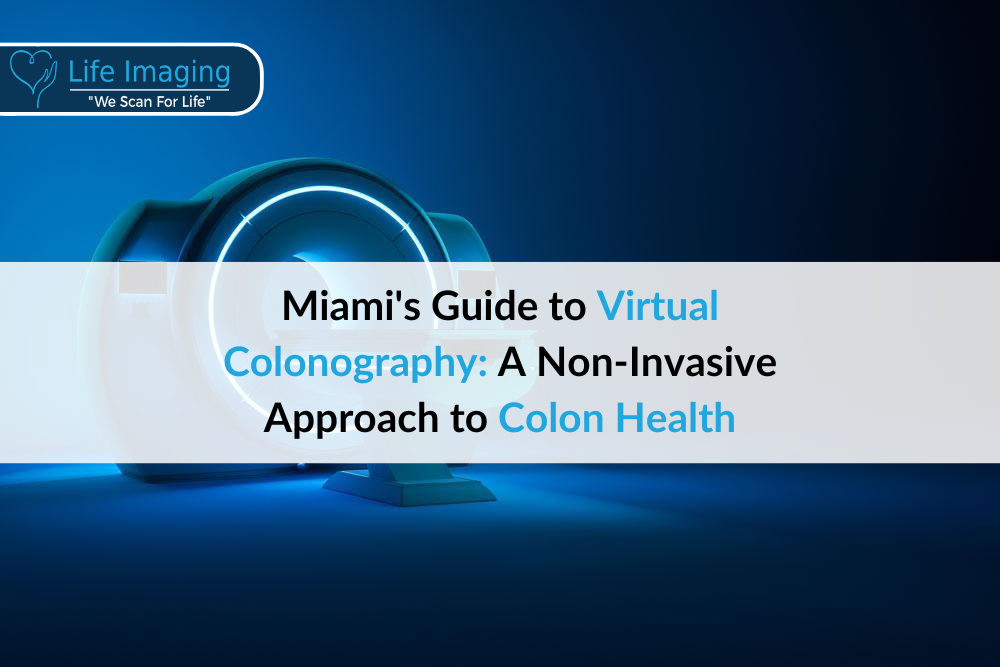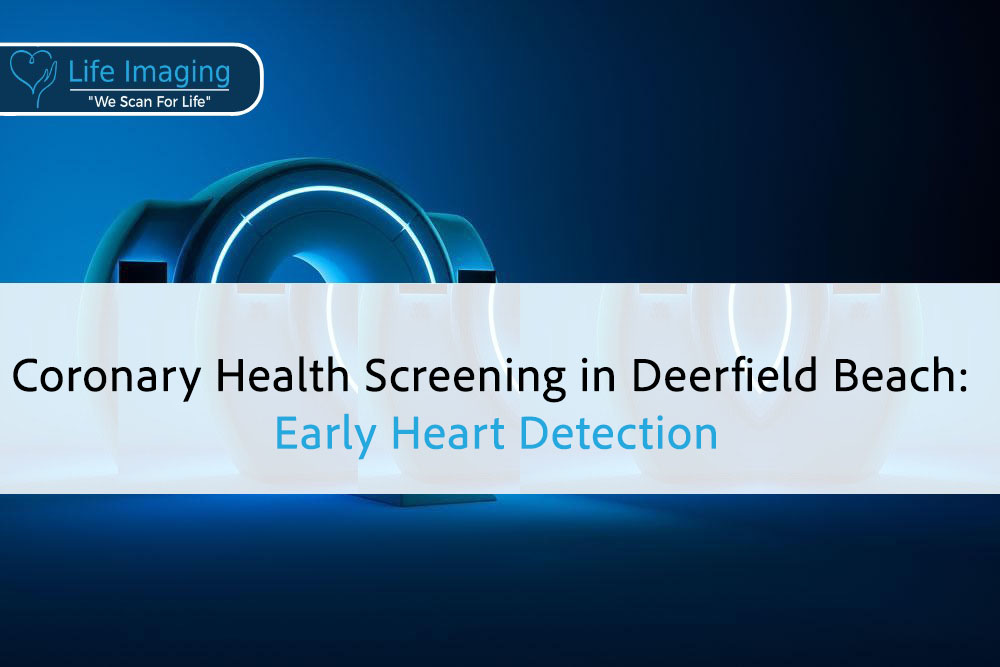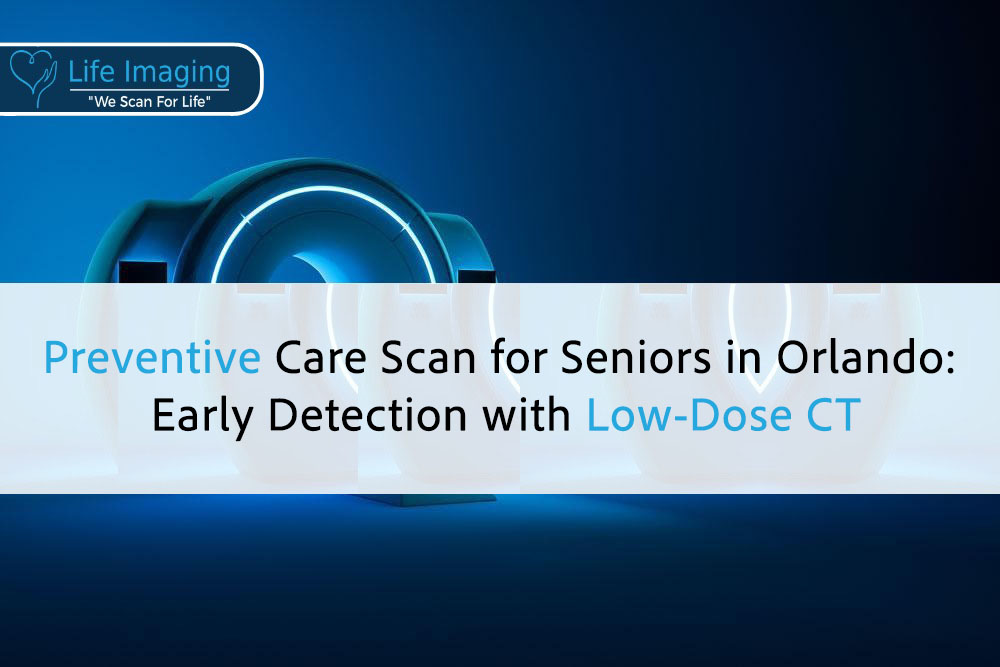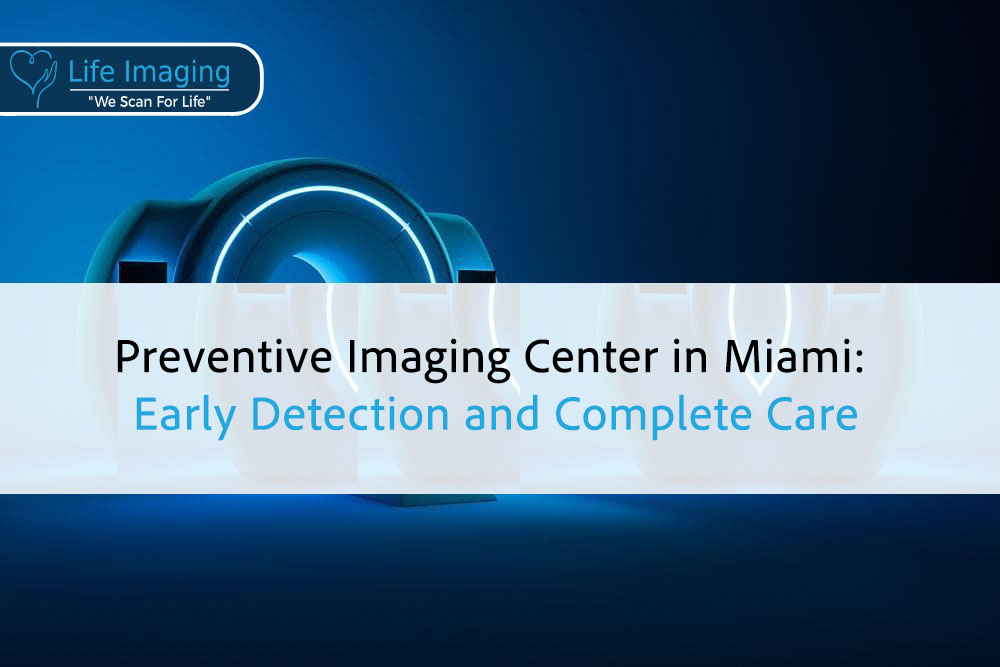
Coronary Artery Scan Near Me in Jupiter: Early Heart Health Detection
Introduction Your heart works hard every second of the day,
NOW OPEN! We’re excited to announce our new location in Jupiter, FL is now open! Learn more.

Virtual colonography is an advanced way to check the health of your colon without needing an invasive procedure. For Miami residents, this technique offers a comfortable and effective way to get vital information about colon health. The process uses imaging technology to produce detailed pictures of the colon, helping doctors spot any issues early.
Many people avoid traditional colonoscopies because they fear the discomfort and preparation involved. Virtual colonography reduces these concerns, making it easier for more people to get screened. This approach is not only less invasive, but it also offers quick results and fewer risks. By using this method, doctors can detect issues such as polyps and cancer at an early stage, which is crucial for effective treatment.
Understanding how virtual colonography works and its benefits can help you make informed decisions about your colon health. Regular screenings play an essential role in preventing serious health conditions. This article will highlight what virtual colonography is, how it differs from traditional methods, and why it might be the right choice for you.
Virtual colonography, also known as CT colonography, is a medical imaging procedure used to examine the colon and rectum. Unlike traditional colonoscopy, this method uses CT scans to create detailed images of the inner lining of the colon. It is mainly used to detect polyps, cancers, and other abnormalities.
Virtual colonography is less invasive because it doesn’t require inserting a long tube into the colon. Instead, a small tube placed into the rectum inflates the colon with air or carbon dioxide to improve imaging. Then, a CT scanner takes numerous cross-sectional pictures. These images are combined to create a 3D view of the colon, allowing doctors to inspect it thoroughly without the need for sedation or recovery time.
This method is gaining popularity for its convenience and effectiveness in early detection of colon health issues. It is particularly useful for individuals who are at average risk for colon cancer but seek a less invasive screening option.
Virtual colonography involves advanced imaging technology. Here’s a step-by-step look at how the procedure works:
The entire procedure typically takes about 10 to 20 minutes. You may feel some discomfort from the inflation, but it is generally well-tolerated. After the scan, you can resume normal activities immediately.
Virtual colonography offers several advantages compared to traditional colonoscopy:
These benefits make virtual colonography an appealing choice for many people, especially those who may be nervous about traditional colonoscopy.
When it comes to screening for colon health, both virtual colonography and traditional colonoscopy have their pros and cons. Here’s a comparison to help you understand the differences:
– Virtual Colonography: Uses CT imaging to scan the colon. The process is non-invasive, doesn’t require sedation, and typically takes less time.
– Traditional Colonoscopy: Involves inserting a flexible tube with a camera into the colon. Sedation is usually required, and the procedure lasts longer.
Both tests require bowel cleansing the day before to ensure the colon is clear for accurate results.
– Virtual Colonography: Generally more comfortable because it’s non-invasive and doesn’t require recovery time.
– Traditional Colonoscopy: May cause discomfort during and after the procedure due to sedation and the invasive nature of the exam.
– Virtual Colonography: Effective in detecting large polyps and cancers. If an abnormality is found, a follow-up traditional colonoscopy may be needed.
– Traditional Colonoscopy: Can detect and remove polyps in a single procedure, offering both diagnosis and treatment.
– Virtual Colonography: Lower risk of complications like perforation or bleeding.
– Traditional Colonoscopy: Slightly higher risk of complications due to its invasive nature.
Choosing between the two depends on individual preferences, risk factors, and the recommendations of healthcare providers.
Virtual colonography is a useful tool for many people, especially those who might be hesitant about traditional colonoscopy. Here are some groups who should consider this screening method:
Consult your healthcare provider to see if virtual colonography is right for you. They will consider your medical history, risk factors, and personal preferences before making a recommendation.
Proper preparation is crucial for accurate results in virtual colonography. Here are the steps you should follow to get ready for the procedure:
Preparing properly can make the procedure smoother and ensure the most accurate results.
Understanding what happens during virtual colonography can help ease any anxiety:
– Check-In: You will check in at the imaging center and complete any necessary paperwork.
– Changing Clothes: You will be asked to change into a hospital gown for the procedure.
– Inflation: A small tube is inserted into your rectum to inflate the colon with air or carbon dioxide. This may cause some discomfort but is usually well-tolerated.
– CT Scanning: You’ll lie on a CT table that moves slowly through the scanner. The machine will take numerous images from different angles, which will be stitched together to form a detailed picture of your colon.
– Post-Procedure: Once the scan is complete, the air or carbon dioxide will be released from your colon, reducing any discomfort.
– Resume Activities: You can typically go back to your normal activities immediately afterward.
Being aware of these steps can make the experience less stressful and more comfortable.
While virtual colonography is a valuable tool, it has certain risks and limitations:
It’s essential to weigh these risks and discuss them with your healthcare provider when considering virtual colonography.
Regular colon health screenings are crucial for early detection and prevention:
– Early Detection: Screenings can detect abnormalities like polyps or cancer at an early stage, making treatment more effective.
– Preventive Measure: Removing polyps before they become cancerous can prevent the development of colon cancer.
– Peace of Mind: Regular screenings provide assurance and peace of mind knowing you are monitoring your health proactively.
Understanding the importance of these screenings emphasizes the need to incorporate them into your routine health care.
People often have questions about virtual colonography. Here are some common ones:
No, virtual colonography is non-invasive and usually painless.
The procedure typically takes about 10-20 minutes.
Yes, you will need to follow specific dietary restrictions and bowel preparation instructions provided by your doctor.
Coverage varies by insurance provider, so check with your provider beforehand.
Risks are minimal, with a slight chance of bloating or discomfort due to the air used during the procedure.
These answers help clear up common concerns and prepare you for the procedure.
Maintaining colon health involves a few key steps:
Following these tips can help you maintain good colon health and reduce the risk of serious conditions.
Knowing what to do after your virtual colonography is important:
– Discuss Results: Schedule a follow-up with your doctor to go over your results in detail.
– Further Testing: If any abnormalities are found, your doctor may recommend additional tests or procedures.
– Lifestyle Changes: Based on your results, your doctor might suggest changes in diet, exercise, or other habits to improve colon health.
– Regular Monitoring: Keep up with regular screenings as recommended by your healthcare provider to ensure ongoing colon health.
Being proactive after your screening helps you stay on top of your health.
Regular colon health screenings, such as virtual colonography, play a vital role in early detection and prevention of colon issues. Understanding the importance of these screenings, knowing what to expect, and following tips for maintaining colon health can make a significant difference. Addressing frequently asked questions and knowing the next steps after your screening ensure you are well-prepared and proactive in managing your health.
Take control of your colon health today. Schedule your virtual colonography with Life Imaging Fla and benefit from our advanced technology and expert care. Your well-being and peace of mind are our top priorities.

Introduction Your heart works hard every second of the day,

Introduction Your heart works around the clock, but changes inside

Introduction Your heart works nonstop, often without a single complaint.

Introduction The best part of getting older is having time

Introduction Good health isn’t just about treating problems, it’s about

Introduction Cancer often begins quietly, long before you feel anything

* Get your free heart scan by confirming a few minimum requirements.
Our team will verify that you qualify before your scan is booked.
Copyright © 2025 Life Imaging – All Rights Reserved